01. Taiwanese Three Cup Chicken (San Bei Ji):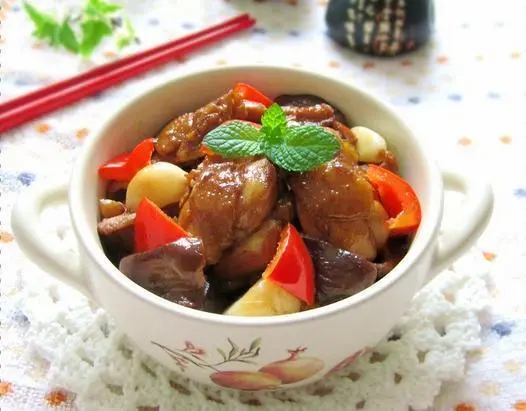
- Main Ingredients & Cooking Method: Taiwanese Three Cup Chicken primarily uses yellow chicken. After the chicken is washed and cut into pieces, it’s marinated for flavor and then stir-fried in hot oil. It’s named for the three key ingredients used in equal measure: a cup of rice wine, a cup of soy sauce, and a cup of sesame oil.
- Taste & Texture: The dish is richly flavored, sweet with a touch of saltiness, and savory. The chicken is tender and juicy, with a pleasant bounce to its texture.
- Cultural Significance: Three Cup Chicken is a renowned Taiwanese staple, representing the island’s culinary heritage and traditions. It’s a common dish for family gatherings and entertaining guests, and is one of the local delicacies that the Taiwanese are proud of.
- Popularity & Influence: The Taiwanese Three Cup Chicken is very well-known locally and has gradually gained recognition and admiration worldwide. Its distinctive taste and cooking method make it emblematic of Taiwanese cuisine, earning international acclaim.
02. Taiwanese Ginger Duck (Jiang Mu Ya):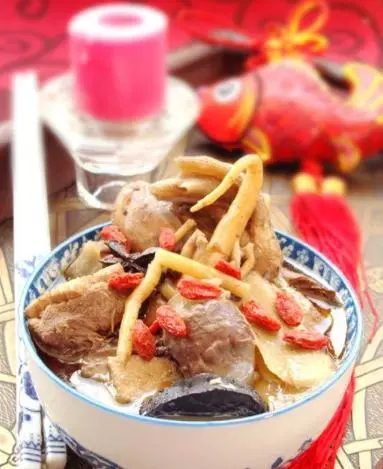
- Main Ingredients & Cooking Method: Taiwanese Ginger Duck primarily uses a red-faced breed of duck and is prepared by a lengthy simmering process. A variety of seasonings, including salt, MSG, soy sauce, ginger powder, Hua Diao wine, and rice wine, are used, ensuring the duck fully absorbs the flavors.
- Taste & Texture: The duck is tender, with a savory taste enriched by ginger, yielding a rich broth. The flavor is profound, and the addition of ginger enhances the richness without making it overwhelmingly greasy.
- Cultural Significance: Ginger Duck is a distinct Taiwanese specialty, considered an excellent dish for winter nourishment. Beyond satisfying the palate, it warms the body and heart, offering health benefits.
- Popularity & Influence: Ginger Duck is a much-loved dish in Taiwan, with a respected standing. With its unique flavor and nourishing benefits, it draws many diners and tourists to try it, making frequent appearances in restaurants, banquets, and family gatherings in Taiwan.
03. Wanluan Pork Knuckle (Wanluan Zhu Jiao):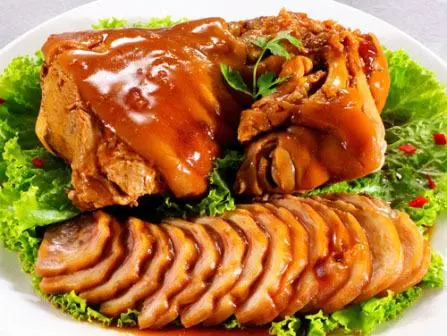
- Main Ingredients & Cooking Method: The primary ingredient of Wanluan Pork Knuckle is, unsurprisingly, pork knuckle. The unique preparation process begins by blanching the pork knuckles with ginger to remove any unpleasant odors. They are then soaked in cold water for half an hour, frozen, and subsequently thawed. The next steps involve sautéing ginger, garlic, and spring onions, introducing the precooked braising liquid, and simmering the pork knuckle for about 60 minutes. Finally, the knuckles are cut into smaller pieces and slowly stewed with seasonings like soy sauce, sugar, cooking wine, and five-spice powder.
- Taste & Texture: The dish offers a robust flavor, with meat that’s both elastic and chewy. The taste has a hint of sweetness, with the meat being tender and infused with the aromatic braising sauce.
- Cultural Significance: Wanluan Pork Knuckle is one of Taiwan’s renowned traditional dishes, originating from Wanluan Township in Hsinchu County. It signifies Taiwan’s local flavors and traditional culinary arts, representing local pride.
- Popularity & Influence: Wanluan Pork Knuckle is highly regarded in Taiwan and considered one of the iconic dishes. Its unique taste and preparation method attract the attention of many tourists and food enthusiasts. This dish can be savored in various restaurants and night markets across Taiwan.
04. Golden Shrimp Balls (Huang Jin Xia Qiu):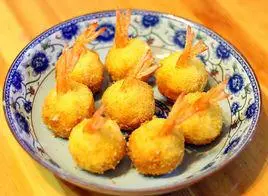
- Main Ingredients & Cooking Method: The primary ingredient of Golden Shrimp Balls is fresh shrimp meat. The shrimp is first cleaned and deveined, then marinated for a while. They are then prepared with ingredients like egg wash, cornstarch, and breadcrumbs. Each shrimp is coated in cornstarch, dipped in egg wash, rolled in breadcrumbs, and then deep-fried in hot oil until golden.
- Taste & Texture: The Golden Shrimp Balls are crispy outside and tender inside, radiating an appetizing aroma of meat. The outer breadcrumb layer is fried to a golden crispy texture, while the inside shrimp meat is juicy and delicious.
- Cultural Significance: Golden Shrimp Balls are a renowned specialty in Taiwan, beloved for their unique appearance and scrumptious taste. They don’t only offer a visual delight but also symbolize the innovative and exquisite culinary skills of Taiwan.
- Popularity & Influence: Golden Shrimp Balls are very famous in Taiwan and have also started gaining recognition and love internationally. Their beautiful appearance and delicious taste make them a popular choice in banquets and restaurants, widely sought after by many.
05. Radish Dry Omelette (Cai Pu Dan):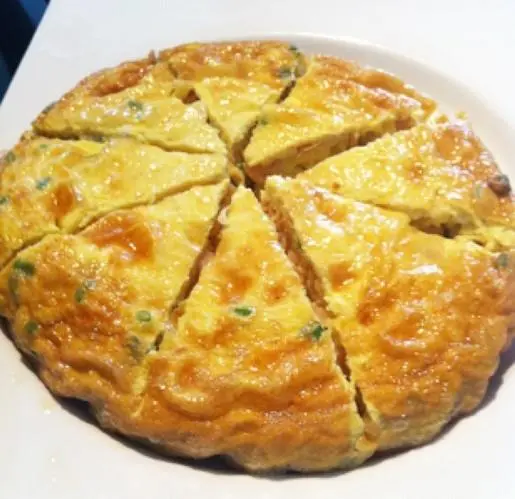
- Main Ingredients & Cooking Method: The main ingredients for this dish are eggs and preserved radish (known as ‘Cai Pu’). The preserved radish is diced, and the beaten eggs are mixed with chopped spring onions, salt, and pepper. Garlic and radish bits are sautéed in oil until aromatic, and then the egg mixture is added, frying it until golden on both sides.
- Taste & Texture: Cai Pu Dan is savory, nourishing, and rich in flavor. The omelette is golden in appearance, with crispy radish bits embedded within. It’s not excessively salty but is filled with umami, offering an intriguing chew, making it perfect to accompany rice or porridge.
- Cultural Significance: This omelette is a popular home-cooked dish in Taiwan, Fujian, and Guangdong regions. It signifies local culinary traditions and home food culture, standing as one of the cherished classic dishes.
- Popularity & Influence: Cai Pu Dan is widely recognized in Taiwan and also has a certain degree of fame in other regions. Its simple preparation combined with a delicious taste makes it beloved by many. As a classic home-cooked dish, it frequently appears on family dining tables and restaurant menus.
06. Crab Roe Sticky Rice (Gao Xie Mi Gao):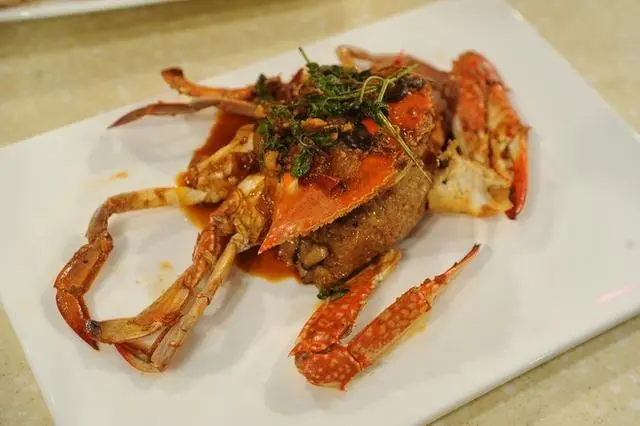
- Main Ingredients & Cooking Method: The dish is made from crab roe, dried shrimp, mushrooms, diced meat, and glutinous rice. The crab is cleaned and chopped, and the diced meat is sautéed to release its oil. Then, mushrooms and sticky rice are added, stir-fried, and seasoned. The seasoned sticky rice is plated, topped with the crab sections, steamed for 7 minutes, and finally garnished with spring onions.
- Taste & Texture: The dish marries the mouthwatering flavors of crab roe with the delightful texture of sticky rice. The rice, permeated by the crab’s juices, is flavorful, chewy, and pleasing to the palate. The crab meat is luscious, and its roe is rich, emanating a strong, delicious aroma.
- Cultural Significance: Crab Roe Sticky Rice is an indispensable main dish in Taiwanese wedding banquets and is also an essential snack in traditional Taiwanese feasts. It symbolizes old-fashioned delicacies, deeply rooted in local traditions and culture.
- Popularity & Influence: Gao Xie Mi Gao enjoys high prestige and influence in Taiwan. As a classic dish in traditional Taiwanese feasts, it is adored by many and has become a part of Taiwan’s culinary culture. For tourists visiting Taiwan, this dish is among the must-try local delicacies.
07. Stir-fried Squid (Sheng Chao Hua Zhi):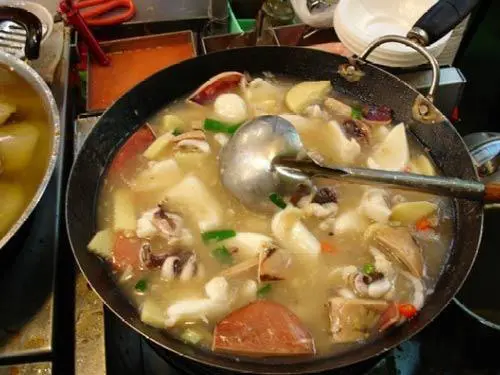
- Main Ingredients & Cooking Method: The dish consists of squid, carrots, wood ear mushrooms, bamboo shoots, and cucumbers. Initially, the squid is cleaned, sliced, and blanched. The remaining ingredients are julienned. Green onions are then stir-fried until aromatic, followed by the julienned ingredients. After adding seasonings and bringing to a boil, the squid slices are added. Lastly, a slurry made of tapioca starch is added to thicken the sauce, followed by a dash of black vinegar and sesame oil just before serving.
- Taste & Texture: Sheng Chao Hua Zhi is characterized by its tender and chewy squid. When bitten into, the savory juice from the dish bursts in the mouth, and the elastic texture of the squid offers a delightful chew. The mixture of various ingredients provides an indescribably delightful taste experience.
- Cultural Significance: Stir-fried Squid is particularly popular in Taiwanese night markets, making it a staple in Taiwan’s culinary culture. It highlights the Taiwanese’s love for seafood and their unique cooking skills.
- Popularity & Influence: This dish boasts significant popularity and influence in Taiwan. As a favorite in night markets, it draws the attention of numerous food lovers. Its taste and unique flavor have gradually received international recognition, making it a must-try for seafood and Taiwanese cuisine enthusiasts.
08. Grilled Mullet Roe (Xiang Kao Wu Yu Zi):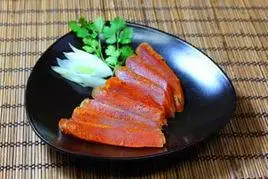
- Main Ingredients & Cooking Method: The main ingredient is mullet roe, a specialty of Taiwan’s western coast. After being salted, the roe is formed into blocks and then sliced thinly using precise knife skills. For cooking, the roe is lightly grilled until it turns golden, releasing its aroma.
- Taste & Texture: Grilled Mullet Roe offers a delicate and creamy texture with a robust and resilient flavor. Its finely-textured roe, slightly sticky when bitten into, provides a comprehensive taste experience. The aroma and freshness are fully expressed during grilling, leaving a profound taste impression.
- Cultural Significance: Grilled Mullet Roe is an indispensable ingredient in Taiwanese cuisine. As a specialty of the western coast, it represents Taiwan’s abundant seafood resources and unique maritime culture.
- Popularity & Influence: Grilled Mullet Roe holds a certain reputation and influence in Taiwan. Being one of the defining dishes of Taiwanese cuisine, it is loved by locals and tourists alike. Its taste and unique preparation also captivate those internationally interested in Taiwanese cuisine.
09. Steamed Shrimp in Bamboo Basket (Zheng Long Sha Xia):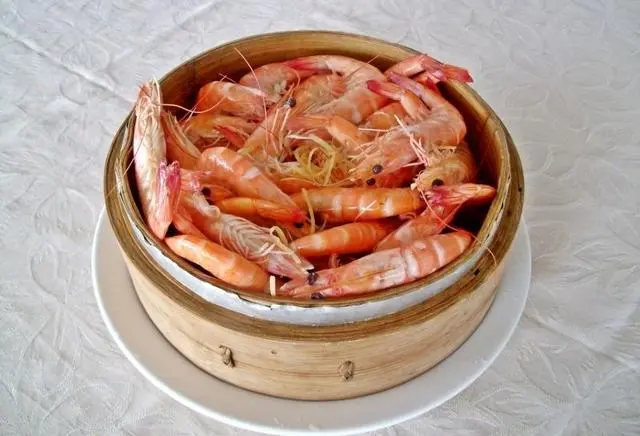
- Main Ingredients & Cooking Method: This dish’s main ingredients are river shrimp and pine needles. The shrimps are cleaned, deveined, and their antennas are removed. On a steaming basket, pine needles are laid out, and the shrimps are placed on top. They’re steamed over high heat for 2 minutes. After steaming, they can be dipped in a sauce made from mustard and soy sauce.
- Taste & Texture: The shrimp offers a fresh, springy, and sweet taste. The unique combination of the shrimp and the aromatic pine needles results in a distinct tasting experience. Accompanied by the spiciness of mustard, the flavors are enriched, creating a layered taste profile.
- Cultural Significance: The dish is a traditional specialty in Taiwan, reflecting a part of Taiwanese seafood culture. It showcases the Taiwanese’s love for seafood and the creative use of ingredients.
- Popularity & Influence: The steamed shrimp dish has significant fame and influence in Taiwan. As a popular dish, it captures the attention of many food lovers. It’s known for its flavor and unique taste, gradually receiving international attention. For those who appreciate seafood and Taiwanese dishes, it’s a must-try.
10. Lotus Leaf Fragrant Fish (He Ye Xiang Yu):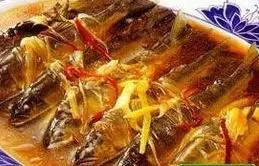
- Main Ingredients & Cooking Method: The main ingredients are flounder, lotus leaves, and red chili pepper. Condiments include green onions, ginger, oyster sauce, and sesame oil. To prepare, lotus leaves are laid out on a plate with the flounder placed on top. It’s then steamed over high heat for 4 minutes. A sauce made of green onions, ginger, chili pepper, oyster sauce, MSG, sesame oil, and a bit of broth is then poured over the steamed fish.
- Taste & Texture: The fish offers a soft texture and a fresh, delicate flavor. The lotus leaf imparts a subtle aroma, enhancing the fish’s natural taste. Combined with the slightly spicy sauce, the result is a savory, melt-in-your-mouth sensation. This dish is known for its light flavor profile and healthy ingredients.
- Cultural Significance: He Ye Xiang Yu is a distinctive dish in Taiwanese cuisine, embodying the Taiwanese’s pursuit of healthy eating and their reverence for nature, as seen in the use of lotus leaves.
- Popularity & Influence: This fish dish holds certain fame and influence in Taiwan. As one of Taiwan’s unique dishes, it frequently appears on local dining tables, adored by many. Its preparation method and delectable taste also appeal to those internationally interested in Taiwanese cuisine.